Whether you are creating a social strategy in-house, or working with an online marketing agency to develop an effective social media strategy, a substantial part of the strategy will revolve around content marketing. When sharing your content across social media channels, the goal is to get the right eyeballs on your content, get them to engage with you content, and lead those interested eyes to your own digital real estate.
One way to narrow down the 2.77 billion users on social media, to reach a subset of this population interested in what you offer, is with the use of hashtags.
Social media marketing cannot do without hashtags. When it comes to using hashtags to increase visibility for your social media posts, there is still a sizeable number of Internet users who do not understand how to use them effectively.
How to Create Effective Hashtags: The Non-Marketer’s Guide to Making Hashtags Work For You
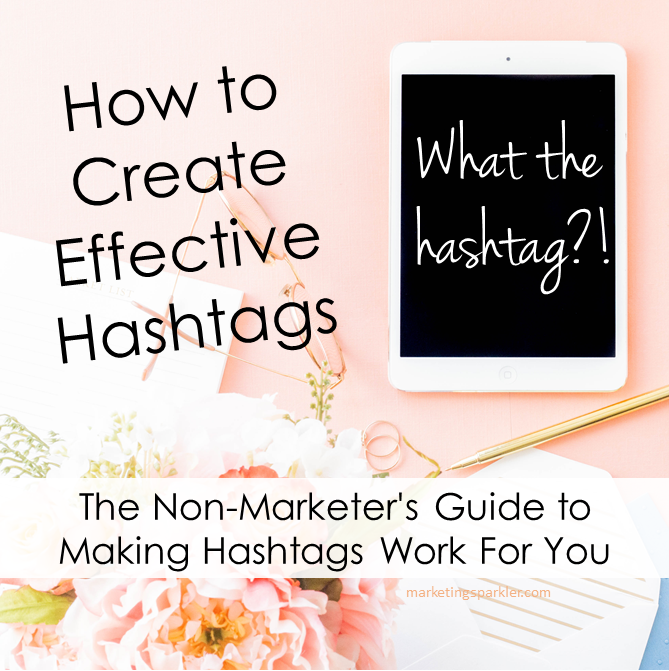
Hashtags keep evolving, calling for individuals to know the current and trending hashtags. Digital marketing experts advise that you use hashtags sparingly and only when they will add value to your posts. Using them too often can be annoying, confusing, and irritating to your target audience. I couldn’t agree more!
Therefore, we need to develop a strategy for using hashtags. This includes creating your own branded hashtags, using popular and current event hashtags, and measuring their effectiveness.
Let’s get started, shall we?

Part I. Work hashtags into your social media posts.
One of the easiest ways to use effective hashtags that generate real traffic is to stop thinking of them as separate elements of the social media that you are posting and instead integrated elements of the content that you share.
Instead of adding hashtag phrases to the end of your content as a “tag,” use these hashtags in the context of the content.
This means in the middle of your sentences, in the middle of your content, or even as the headline of your social media post to draw attention instantly and get your point across ASAP.
This serves a dual purpose:
- You’ll be able to break up the flow of your social media post into “bite-sized chunks” – something that’s incredibly important for today’s attention span challenged market.
- You will also be able to get away with using more original and organic looking hashtags that kind of go with the flow, rather than cliché hashtags that are just kind of tacked onto the end of whatever it is you were going to publish anyway.
[Tweet “Avoid using cliché hashtags that are tacked onto the end of whatever it is you were going to publish anyway.”]
Part II. How to create hashtags that actually work.
By creating your own hashtags you can drive organic traffic to your website and target your audience.
The most important thing you have to remember when you are creating hashtags designed to help you drive traffic is that you treat them the same way that you would treat headlines on your advertising.
So, what does this mean?
-
- Keep them relatively short.
- Keep them incredibly interesting.
- Make sure they are relevant.
- Use them to do the one thing they are intended to do – drive traffic to your content.
A lot of people make the mistake of trying to get too much out of hashtags or social media marketing in general. Then, they are surprised when they aren’t getting anywhere near the kinds of results they were hoping for.
You have to remember that these key parts of social media are exactly that – key parts and not the “whole shebang”.
You have to work hashtags into an overall smart and savvy marketing strategy designed to turn cold traffic and complete strangers into hot prospects and paying customers.
[Tweet “Here are some tips and tricks to help you create better hashtags right away!”]
Creating Your Own Hashtags
First things first, do some research. Which hashtags are relevant? Which hashtags are popular? There are many tools that will search across social media sites and show you posts with the hashtag in.
The ultimate goal for you is to create original, relevant hashtags that resonate with your audience.
Take the hashtag #testyourhashtags as an example. I used a site called Hashatit and searched for this hashtag. Surprisingly there were no results. That’s not automatically a bad thing. Consider that if there are no current posts attached to the tag, this blog will be the only one. So if I use it, I will have the readers full attention.
Take another example: #createhashtags. This will be widely used as people will be researching on how to create hashtags. The originator of the articles will use that tag when talking about how to create them. Sort of like supply and demand.
Tips for creating effective hashtags for your brand:
-
- Keep them short. Period.
- Use them in the content of your social media posts instead of at the bottom or at the end.
- Keep your links close to your hashtags, this will help increase the engagement you receive.
- Make sure they not only targeted, but interesting to the audience you are working to attract. For example, #furniture is not as targeted (or interesting) as #shabbychicfurniture
- They must be relevant. How many times do you see people randomly putting tags in a post just to get clicks? Sure they might come up in a search but if their post isn’t about the topic, they won’t get the engagement. I wouldn’t write a blog about dogs and then share it using #motorbikes #classiccars as chances are I will just make myself unpopular.
-
Be sure to optimize your hashtags by posting them at the right times. For example, Thursdays at 11am or 3pm is the best time to post on Instagram and any weekdays between 12-3pm is the best time to post on Facebook.
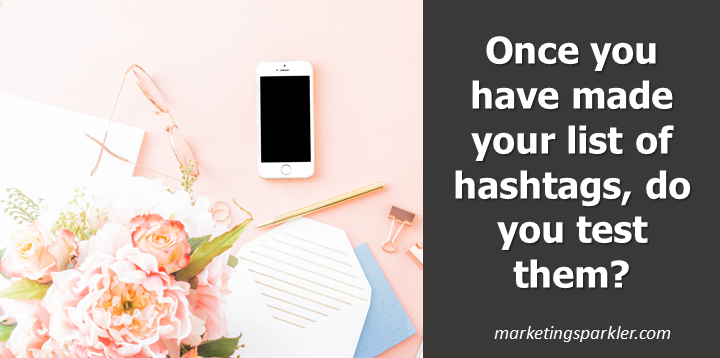
Part III. Once you have identified your hashtags – do you test them?
Sitting on a social media post and randomly putting in tags that spring to mind is one thing. However, if you don’t know their impact or if anyone else is using them, how do you know if they are going to work for you? Or worse, you could use a hashtag that you think means one thing, but actually it means something completely different. Can you say #awkward?!
For example, you don’t want to be paying respects to someones funeral and then add a hashtag that is linked to mass amounts of party gear.
Take a hashtag like #walkitoff. This could mean things to do with dieting, exercise. sports, charity walks. But it could also reference someone getting fired from a job. Just #walkitoff. This is why you need to know what the conversation is surrounding your hashtag before you start using it.
[Tweet “Hashtag tip: you need to know what the conversation is surrounding your hashtag BEFORE you start using it.”]
It is really important to test your hashtags and while you are at it, make sure you look into software that can track the analytics of them. In this way, you know what gets the clicks and what drives the consumers to your website. If you find a hashtag relevant to your site that isn’t widely used, it is possible to start a trend and be the center of it. This is why testing and using hashtag tracking tools are so important.
There’s definitely something to be said about creating your own hashtags that allow you to kind of control the narrative and own “real estate” in the social media game. However, at the same time, there is absolutely zero reason whatsoever to ignore leverage already available. Especially when it has already proven to be tremendously popular with the people that you are trying to reach.
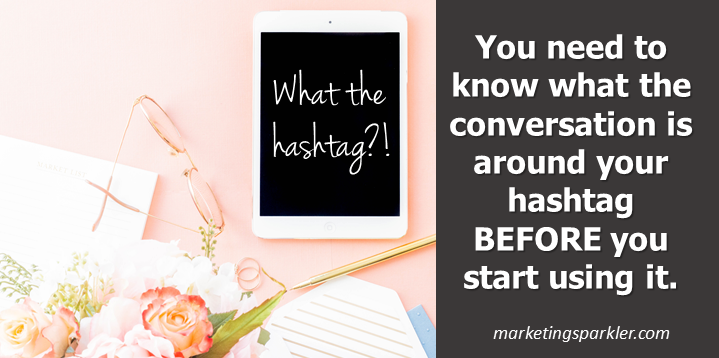
Researching your hashtags
There are quite a few different tools available (many free of charge) that really let you research different hashtags on different social media networks. You can find out which ones are incredibly popular right now (usually differentiated by the “Trending” tag), in addition to which ones are getting the most engagement with that particular social media network.
Engagement is the name of the game. This can be challenging to generate right out of thin air when you are building up your social media profile from scratch. But, it is a core tenet of hashtag traffic generation.
You need to create hashtags that are immediately interesting, relevant, and easy to share. These are the core tenants of viral content and viral marketing on all of social media today.
[Tweet “Create hashtags that are immediately interesting, relevant, and easy to share.”]
Review popular hashtags for the last six months
Look back six months, and review the most popular hashtags over that stretch of time. Then, find ways to either co-opt those tags, or create a new spin that will be interesting and relevant to your content. This will give you a tremendously “unfair” advantage over the rest of your competition.
This kind of research can take a little bit of time to drum up on your own (of course you could always outsource most of it), but the return on investment for doing this digging is definitely worthwhile.
[Tweet “All marketing efforts should be tested and measured. Hashtags use is no different.”]
Part IV. Tie analytics to your hashtags.
More than a couple of very valuable tools today can be utilized to track the interaction and engagement of the hashtags that you are using, and you need to make the most of these analytics tools ASAP if you aren’t already leveraging them right now.
The real core differentiator that has helped to separate online marketing from the rest of the pack is the ease of tracking and testing available.
Yes, it used to be possible to test and track more traditional forms of advertising – usually with coupon codes and mailing lists – but we’ve never had access to this much instant data like we do right now. It would be a shame to waste any of that data, especially when that data can better inform the hashtag marketing that you decide to move forward with from here on out.
Different marketing tools will allow you to analyze the data in different ways, and some of them will compare engagement from the hashtags you are using to other similar hashtags being used at the same time.
These kinds of tools will really help to sharpen your marketing abilities in your focus, and there’s definitely nothing wrong with that!
Part V. Use popular and current event hashtags.
It s hard to resist using popular and trending current event hashtags to maximize your visibility. While there is absolutely nothing wrong with doing so, make sure you understand how to use popular and current event hashtags in your favor.
[Tweet “Make sure you understand how to use popular and current event hashtags in your favor.”]
Make sure your hashtag is specific
To make hashtags work in your favor, you need to know your ideal audience, and then doing all you can to rouse a specific interest. Targeted audiences translate to better engagement for your posts, and using specific and popular niche hashtags earns you more site visits than general hashtags ever will.
Do not make the mistake of getting too sophisticated with your hashtags, make them easy to remember and memorable.
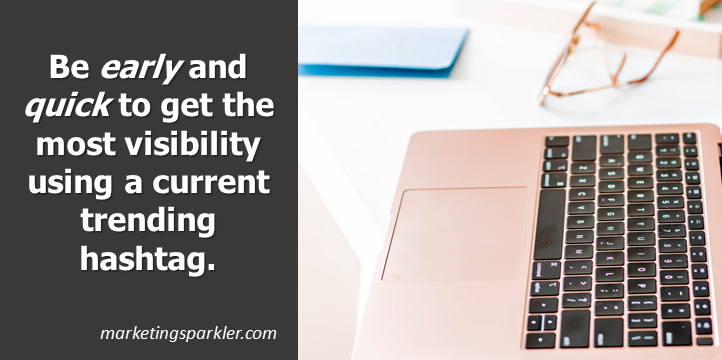
Be early and quick about it
With popular and current hashtags, it is easy for a post to get fewer engagements than they deserve. Use hashtags monitoring sites often to see the trending hashtags that relate to your niche in business, and ensure you are quick and among the first to use them.
This way, you will be more discoverable, and your posts will help you to connect, build, and cement relationships with your audience.
Use restraint – less is more
There is the overwhelming desire to use current and popular hashtags to drive traffic to your posts. It may come off as a waste by using a few, but less is more with hashtags. Do not have more hashtags than words on your post to avoid diluting engagement from actual humans.
With popular hashtags, there is the possibility of attracting spam bots, which might lead you to think you have a bigger following than you might do.
Post and use trending hashtags on multiple networks
The average social media user is on at least three networks, and they look at the same topics that interest them. Make a habit of using hashtags on multiple social media networks to allow your brand more exposure to a wider audience. This makes your brand more memorable, especially when using a popular hashtag before a keyword.
Search the hashtag before using it to ensure it resonates with your content and audience to ensure they work in your favor.
It’s not just enough to plug your content into these hashtag traffic streams without any real context, either. You have to be sure that your content is relevant to the hashtags that you are using, not only because using the wrong hashtags could cause you to miss out on a lot of traffic, but it could actually actively push people away at the same time.
That would be a major mistake, especially if you are a brand-new or relatively new social media account just looking to create traction today.
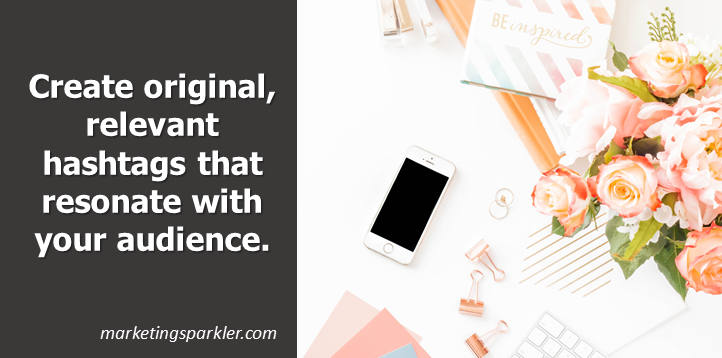
Effective Hashtags: Bottom Line
To the internet, hashtags are without a doubt what red blood cells are to the human body. They have their origins on Twitter, and they have found their way to almost all aspects of digital marketing and lead generation. They can help you keep up with current trends, and they can provide a source of visibility and referral traffic when used correctly. Use the tips in this post to develop an effective hashtag strategy for your marketing campaigns.
Ciao,
Miss Kemya


Great post! I am really glad to read your post. Effective hashtags are really important to increase engagement rate. I use Trackmyhashtag a hashtag tracking tool. It tracks as well as finds relevant hashtags to use on Twitter which literally helps me to increase engagement on my Tweets. You should consider this tool also in your post. Your readers will definitely find it useful.
Hi Kate! I’m not familiar with that tool, but I’ll have to check it out
[…] Avoid using cliché hashtags that are tacked onto the end of whatever it is you were going to publish anyway. Click To Tweet […]
What an awesome post, Miss Kemya! Just awesome! Almost anyone could probably get useful hashtags in a matter of an hour (or less) by just following what you mentioned. Research them, use hashtags that are current, don’t overdo it and always track them and test all the time.
So glad you enjoyed it Nathan! Anyone using social media needs to have an understand of hashtags, at least the basics. And testing hashtags can make all the difference when trying to get visibility for your posts.
How important are hashtags? It seems like I am seeing them used less and less but this doesn’t necessarily mean they’re not helpful. Do you think they’re still as relevant now as they were in previous years?
Hey Misha! Hashtags are still important, and highly relevant. They are the easiest way to cut through noise and find the content you’re looking for. I click hashtags everyday when I’m performing research. They are my fave filter. Keep using them!